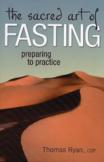Six Faces of Temperance
At the closing of the interreligious World Day of Peace in Assisi in 1986, Pope John Paul II articulated the essence and value of the day’s fasting and prayer: “Let us see in it an anticipation of what God would like the developing history of humanity to be: a fraternal journey in which we accompany one another towards the transcendental goal which he sets for us.”
Interreligious encounter itself has been on a journey of its own, beginning in the 1930’s with voices within Christian ecumenical circles calling for a rejection of the prevailing conviction that there existed an unbridgeable discontinuity between the Gospel and non-Christian traditions. By the early 1970’s the World Council of Churches ceased talking about the possibility of interreligious dialogue and began actually to engage in it. Discussion guidebooks for local grass-roots study groups began to appear, such as My Neighbor’s Faith—and Mine: Theological Discoveries Through Interfaith Dialogue (W.C.C., 1986). Within the Catholic Church the spirit and convictions of the Second Vatican Council’s “Declaration on the Relationship of the Church to Non-Christian Religions” (Nostra Aetate) spawned a series of guidelines, like the Pontifical Council for Interreligious Dialogue’s “Dialogue and Proclamation” (1991).
It is fortunate that Thomas Ryan’s The Sacred Art of Fasting appears during the 40th anniversary commemoration of the publication of Nostra Aetate. Ryan is a Paulist priest who coordinates ecumenical and interreligious relations for the Paulist community in the United States and Canada. His many popular books include Reclaiming the Body in Christian Spirituality. The author’s stated intention in the present work is to focus “not just upon fasting as a rational act but as a religious act” in six different traditions: Judaism, Christianity, Islam, Hinduism, Buddhism and the Latter-Day Saints. The result is a work that serves as a thematic embodiment of the particular avenue of interreligious approach stipulated in “Dialogue and Proclamation”: “These [other] traditions are to be approached with great sensitivity, on account of the spiritual and human values enshrined in them. They command our respect because over the centuries they have borne witness to the efforts to find answers ‘to those profound mysteries of the human condition’ and have given expression to the religious experience and they continue to do so today.”
Beyond the author’s informed respect toward non-Christian traditions, what elevates the book above being a mere exercise in the most elementary form of comparative religions methodology (as in, “We do and think this; you and they do and think the same or otherwise”) is the degree to which the text promotes the formation of what Ewert Cousins refers to as a “complexified global consciousness.” This is an expanded and enriched awareness gained when a party in dialogue passes over into the other’s worldview or consciousness and experiences the other’s values from within that other perspective. Nothing of the party’s original convictions or worldview is denied, which precludes the possibility of a universalized, undifferentiated and abstract consciousness.
Ryan presents the subject of fasting as an effective passageway between traditions. In addition, Chapter Three, on the Christian tradition, and Chapter Eight, “What Makes Fasting a Sacred Art?” will usher Catholic readers into a renewed and finely drawn understanding of the cardinal virtue of temperance, which, the author observes, received minimal attention from the post-Vatican II generation.
Chapters Two through Seven address each specific tradition in turn. The chapter titles employ well-chosen phrases that spotlight their content at a glance. These include, for example, “Islam: Allah-Consciousness, Self Restraint, Social Solidarity” and “Buddhism: Purity of Body, Clarity of Mind, Moderation.” Fasting in Christianity is allied with the concepts “Mystical Longing, Liberation through Discipline, Work of Justice.”
The helpful and concise final chapter, “Preparing to Practice,” begins with an informative section that touches on health care concerns, in a FAQ format. This is followed by a section on the what, how and when of fasting. The last section surveys alternative forms of fasting—fasting with one’s eyes, ears and hands, and so forth—thus providing a useful updating of the moral dimensions of fasting that were familiar aspects of classical spiritual literature on the subject. In the concluding paragraph the author underscores the truth that “in every culture and religion in history, fasting has been an instinctive and essential language in our communication with the Divine.”
The Sacred Art of Fasting, as a solid and stimulating addition to the reading list of interreligious discussion groups, enhances communication with the human “other” as well.
This article also appeared in print, under the headline “Six Faces of Temperance,” in the June 20, 2005, issue.








